INSIDE: Ready to start your baby on solids? But bamboozled by weaning schedules, do and don’ts and weaning recipes. Fear not. Here are the basics you need to know to start your baby’s weaning journey.
According to books and online influencers, weaning is bamboo cutlery, quinoa and timetabled feeding schedules.
In reality, it’s scraping Weetabix off the floor, forgetting to defrost your baby’s lunch and fighting with your mother over your decision to skip baby cereal!
Weaning is much simpler than you think!
Weaning moves your baby from drinking milk to eating solid foods. This journey starts at about six months, and your baby is considered ‘weaned’ at its first birthday.
Spend too much time researching; weaning seems like a complicated system of routines and baby recipes. But weaning is about helping your baby to learn to like and feed themselves modified versions of your family foods.
It’s as simple as that.
Isn’t it essential that your baby learns to like quinoa?
No, what’s important is thinking about what you’ll be serving your baby in a year, two or three years. You should help teach them to like these family foods (provided your family eats a reasonably balanced diet).
Bonus: As a bonus for joining my weekly newsletter, get this free cheat sheet ‘Weaning at a glance’.
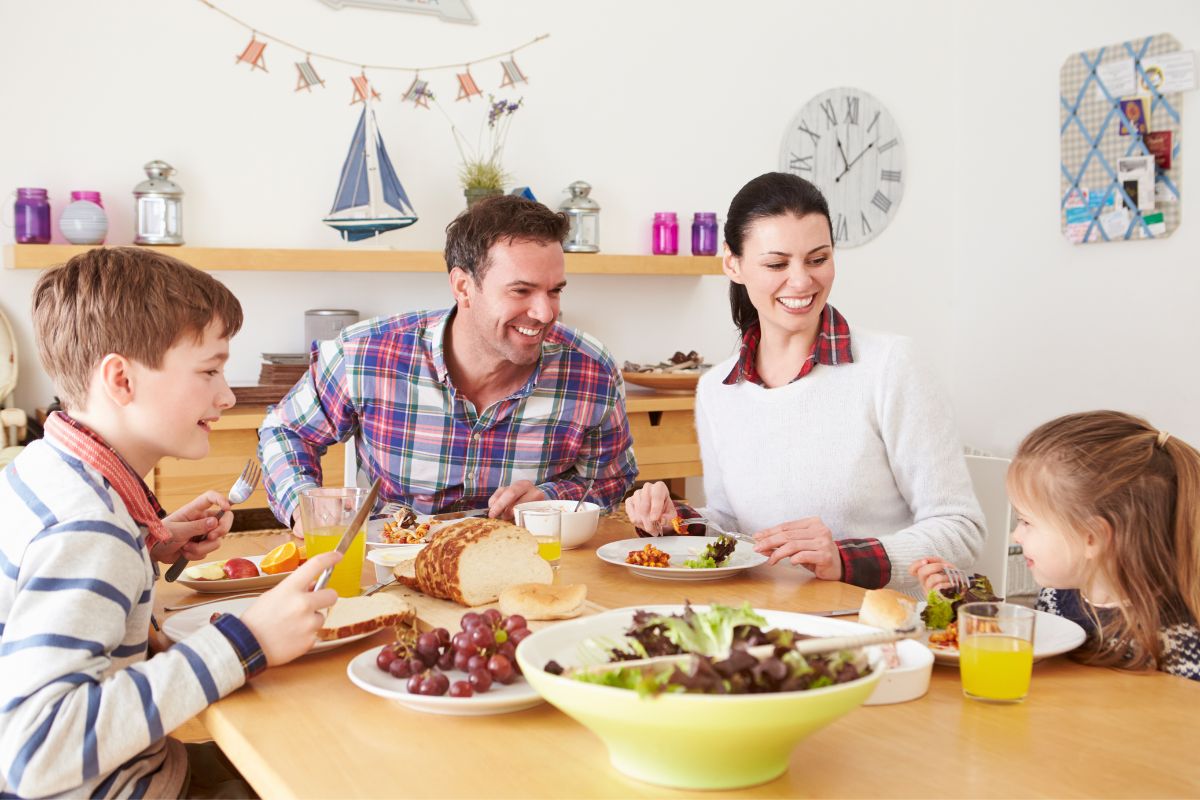
Weaning is about getting your baby to learn to like family foods (not fancy weaning recipes or superfoods!)
Ready, Steady, Wean-From Confused To Confident In No Time At All
Save yourself time, stress and money and get all the answers you need in one easy-to-follow online course.

How do I know my baby is ready for solid food?
You’ll read and hear different guidelines about when to introduce your baby to solid foods. And the debate about the exact timing can get heated.
Most health organisations, including the HSE, the WHO and the NHS, recommend introducing complementary solids at or at about six months of age.
Every baby’s different, though. So, watch your baby and not the clock. There are three clear signs that your baby is developmentally ready to eat solid food.
Three signs that your baby is ready for solids.
- Your baby can sit upright with minimal assistance and hold their head up
- They have good hand-eye coordination
- They can swallow food

Watch your baby, not the clock!
What is the best food to start with for my baby?
Choosing what food to start with can be contentious, with parents online regularly slugging it out over the merits of vegetable-first weaning versus traditional baby rice.
Don’t worry. There’s no absolute right or wrong way of introducing solid foods.
Here are four foods you could start with:
- Baby Rice or smooth porridge-like Ready Brek from a spoon made with your baby’s usual milk
- Vegetables (including bitter greens) as a purée or baby-led weaning foods
- A mix of fruit and vegetables as a puree or finger food.
- Different foods like meat or potatoes.
I don’t recommend going straight for potentially allergenic foods like egg or peanut because everyday issues when your baby starts eating, like gagging or vomiting, might be inadvertently attributed to allergy.
Baby-led weaning or traditional weaning-is one approach superior?
In 2007 when I had my first baby, no one had heard of baby-led weaning. By the time my third baby was born in 2012, it was an approach to weaning a minority of parents followed. By 2016 and the birth of my fourth baby, it was mainstream. And today, there aren’t many parents who haven’t come across the term.
Like most parenting choices, there’s no clear-cut answer to which approach is superior. As a parent (and a dietitian), I feel there are pros and cons to food from a spoon and finger foods.
Here’s a quick overview of the pros of each approach.
The best aspects of using a baby-led weaning approach
- Your baby is in control at mealtimes
- No pureés to make
- You avoid problems in moving to lumps
- Overfeeding is unlikely
- It can encourage more adventurous eating
- Your baby will develop their self-feeding skills more quickly (hand-eye coordination)
- You’re more likely to include your baby in mealtimes
- It’s fun
- They use all their senses to learn about food
The best aspects of spoonfeeding
- Your baby gets to ingest and taste food even when they don’t have the skills to feed themselves yet
- It’s easier to prepare meals in advance
- You know what and how much was eaten
- It’s more straightforward to include iron-rich foods (meat)
- It can be quicker and less messy
The three stages of weaning-what does each stage involve and how to progress
Although you’ll often see weaning explained in 3 stages. These stages only give you a rough outline of the weaning journey. Weaning is a gradual process for your baby, moving from milk to chopped foods by their first birthday. It’s not about hopping from one stage to another at set time points.
Weaning at a glance-from your baby’s first bite to their first birthday! (you can get the FREE cheatsheet here when you join my list)
Around six months: start with one meal a day of pureed food (or appropriate finger foods if doing baby-led weaning from 6 months). This stage is about exploring food for the first time and building your and your baby’s confidence.
7-9 months-By now, you should offer your baby three balanced meals (ideally eating together with your baby) of mashed texture foods. And your baby should be getting more confident with finger foods.
10-12 months– You’ll still be offering your baby three meals daily (some babies may eat snacks). Your baby will enjoy meals which are chopped with bigger soft lumps, can manage a broader range of finger foods, and will become increasingly dextrous in their ability to pick up small pieces of food and move them to their mouth.
Don’t get stuck in a rut!
The key is not to get stuck on any one texture, especially not smooth purées for too long. If you start weaning at about six months, your baby generally only needs a couple of weeks with smooth puréed food before being ready for mashed food. And they can start finger foods from six months also.
And if you’re doing baby-led weaning, introducing food that’s always dry, like muffins and pancakes, isn’t a good idea either. Because they also need to learn to like runny, messy foods like yoghurt and one-pot meals like curry and stews.
Take a look at your breakfast, lunch or dinner today. How many different textures are you eating? Just because you can chew a sandwich (finger food) doesn’t mean you never eat soup anymore (purée).
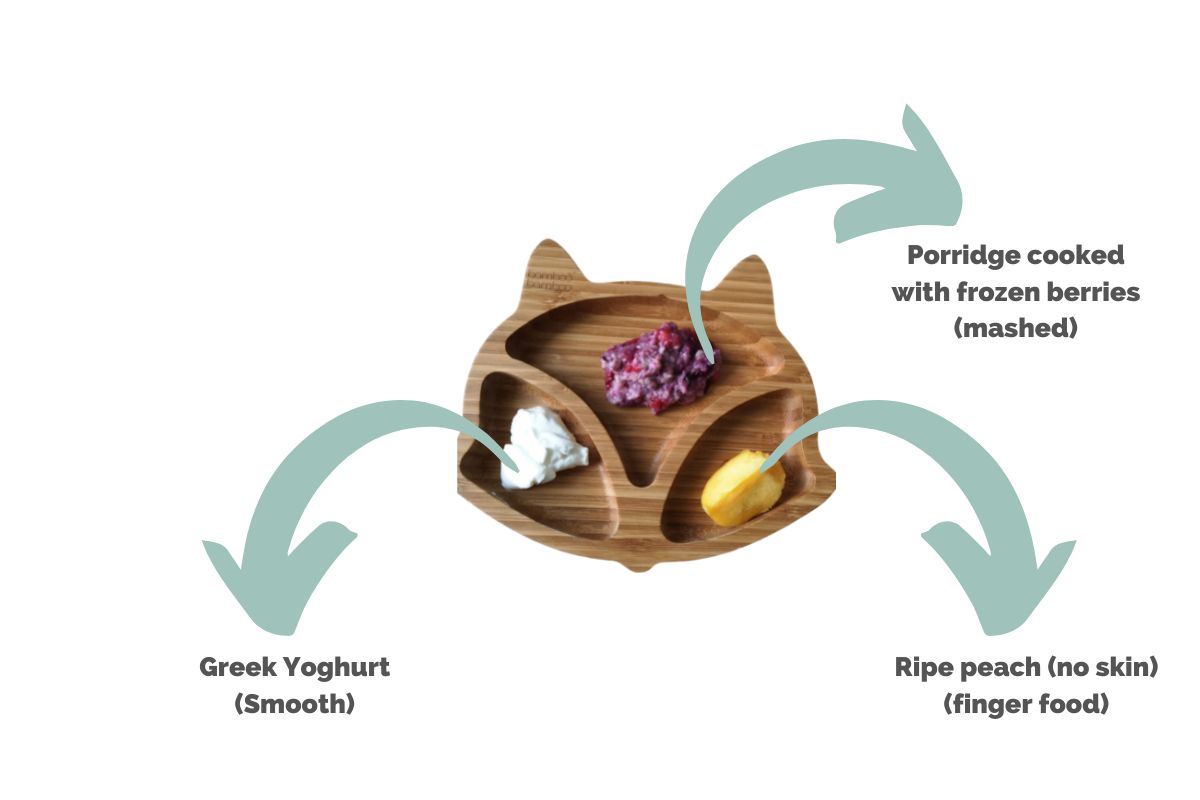
Offer your baby a range of textures over the day
What’s a weaning schedule, and how do I create a good one?
You don’t need to follow someone else’s feeding schedule. Every family’s different, and every baby is unique.
Here are some general pointers to remember when working out the best feeding schedule for your baby.
- When starting weaning, offer your baby the first solid foods after their usual milk. They won’t be able to concentrate on new foods when they’re hungry for formula or breast milk.
- Offer solids when your baby is rested. They can’t learn new eating skills when falling asleep in the highchair.
- Start with one meal a day (for most parents, what works best is an early lunch mid-morning) and then work up to three meals a day by seven months. Aim to space these meals between waking, naps, bedtime, and milk feeds.
How to find a healthy balance between milk feeds and solids in your feeding schedule
I get more questions from parents about milk than any other topic!
Here’s what you need to know.
Milk keeps your baby alive and thriving for half of its first year. It’s all they need and so much handier than actually having to prepare food for them! But, at some point, milk is no longer enough at six months old.
Contrary to the catchy rhyme, “Food before one is NOT just for fun”.
When your baby starts with foods, focus on exposure and developing their eating skills. Milk continues to meet most of your baby’s needs. As your baby grows, matures and becomes more skilled at eating, milk intake reduces and, at around ten months old, provides slightly less of their needs than solid foods.
Although it continues to nourish your baby right through the first year.
So, yes, food should be fun, but it’s much more than that too.
Balancing breast milk and solids-it’s so easy even a baby can do it!
You’re breastfeeding can sit back, relax, and let your baby balance their milk with their food. Research shows that breastfed babies are excellent at regulating their milk intake, including when they start on solids. So, breastfeed your baby on demand and feed solid meals on a schedule.
Balancing bottles of infant formula and food-it’s not hard
At seven months, your baby needs about 20oz (600mls) of infant formula milk; at ten months, about 13oz (400mls) of infant formula. How many bottles that translates to is up to you and your baby. Some babies like to drink fewer bigger bottles, and for others, more frequent smaller bottles work better. There’s no right or wrong way to offer infant formula.
Six things to keep in mind to keep your baby safe while eating finger foods
Whether you plan on 100% baby-led weaning or using a combined approach, your baby benefits from eating finger foods. However, you must keep your baby safe as they learn to manage finger foods.
These six simple tips come from research conducted in New Zealand looking at safety in modified baby-led weaning.
- Wait until your baby is developmentally ready. Can they hold their head steady, sit up with little support, and reach and mouth toys?
- Test food making sure it’s soft enough to mash easily between two fingers.
- Help your baby grasp the food by offering food at least as long as your baby’s fist is on at least one side of the food. Or about the length of one of your fingers and two fingers wide.
- Your baby should be sitting upright in their highchair. Never learning backwards, reclined or on your lap.
- Never leave your baby alone with food.
- Take a paediatric first aid course or watch some First Aid videos.
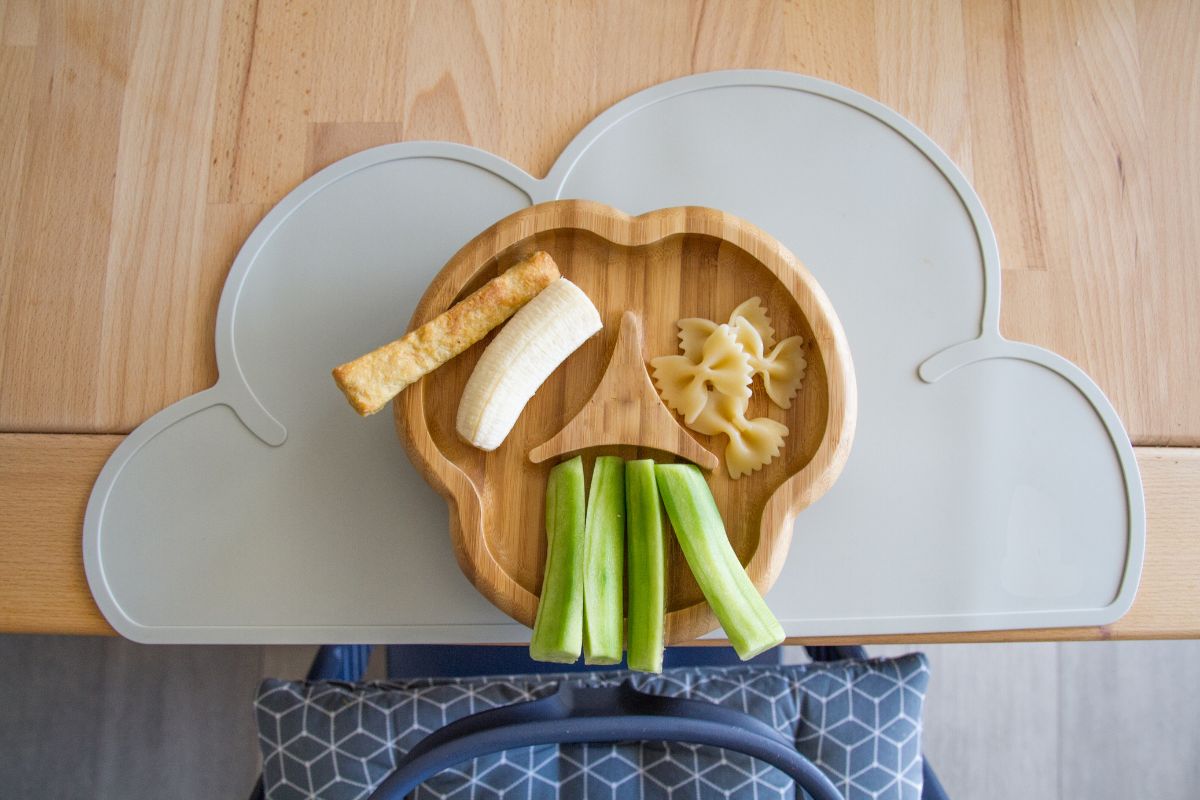
Keep your baby safe while eating finger foods
When is the best time to introduce potentially allergenic foods?
Current guidelines recommend introducing potentially allergenic family foods before your baby’s birthday.
The most common food allergies in the first few years of life include milk, egg and peanut.
The best way to introduce these foods is one food at a time and “slow and low”. Meaning starting with a little of the food (1/4 teaspoon or less) and then building up gradually to larger portions.
- Peanuts and Tree Nuts: Whole nuts are choking hazards, so introduce them as smooth nut butter or ground nuts.
- Eggs: Introduce as well mashed, hard-boiled egg
- Milk: If your baby drinks regular infant formula milk, they’ve already been introduced to cow milk protein. For exclusively breastfed babies, introduce a little cow’s milk with food.
How can I ensure my baby gets all the nutrients they need?
As you move past first foods, one of the easiest ways to plan nutritionally balanced meals for your baby is to use this rule of thumb:
- Pick an iron-rich food: Babies need iron for their brains, bodies and immune systems to develop normally. These foods include meat, chicken, tofu, beans, lentils, eggs and fortified cereal like Ready Brek.
- Add an energy-rich food: Babies have tiny tummies, so we need to provide foods that are a good source of calories. These foods include healthy fats like oils, avocado, smooth nut butter, starchy foods like potato, rice and pasta and dairy foods like whole yoghurt and cheese.
- Finish the plate with a fruit or vegetable. Vitamin C helps your baby to absorb iron, and they also help with a healthy gut. You can choose fresh, frozen or tinned in water.
Portion sizes for weaning-does my baby need to eat a certain amount?
Research shows that responsive feeding is the best way to feed your baby from birth. This is easy with breastfeeding as your baby’s in total control, but it’s possible to responsively bottle feed too.
Then apply the same rule to food.
Responsive feeding is crucial for supporting your baby’s appetite regulation. And this is an excellent skill to have as an adult.
Responsive feeding means letting your baby decide how much to eat at each meal-and not using pressure to reach an arbitrary portion target.
This means no ‘here comes the aeroplane’, choo spoons (yes, I’ve seen these!) or trying to sneak food in when your baby’s distracted with screens or toys.
Your baby needs to be active in the meal, not a slot machine!
Whether spoon-feeding or offering finger foods, it’s important to let your baby lead the way. Even without words, your baby can tell you if they’re feeling hungry or full.
LEARN MORE: Portion sizes during weaning

When your baby is telling you they’ve had enough, respect it!
Reality check! Do I need to make all my baby’s food from scratch?
Offering your baby fresh foods and family foods is a great start. However, it might not be realistic for you to do this 100% of the time. And this is OK.
Try to offer your baby modified versions of your family meals when possible. If you want to use a baby pouch sometimes, try following these tips
- Choose pouches with less than 5g of sugar per pouch.
- Choose products with higher meat, fish, bean or lentil content once you’re past the first few weeks of weaning. Most contain about 10%, but some brands have about 20%. Remember, iron is an essential mineral for your baby’s nutrition.
- Squeeze the contents into a bowl and feed off a spoon. At least this way, your baby can see what they’re eating.
Is follow-on formula important for my baby-or is it a marketing ploy?
This is straightforward. No, follow-on formula isn’t needed. First infant formula is recommended for up to 12 months. After this, your baby can move onto cow’s milk or a good fortified soya milk. Follow-on formula milk is manufactured so infant formula companies can get around legislation about the marketing of first infant formula.
Are plant-based weaning diets really safe for babies?
Yes. Many professional organisations, including the British Dietetic Association, NHS, and the American Academy of Paediatrics, endorse that appropriately planned vegetarian diets are safe for children and may provide certain health advantages.
However, it’s important to remember that babies are not mini-adults. So, get professional nutrition advice about planning a vegan or vegetarian weaning diet. My online weaning course has a dedicated section on plant-based foods.
My baby’s allergic to milk-is weaning my baby milk-free difficult?
If your baby has a suspected or confirmed milk allergy, you need one-to-one advice on milk-free weaning from a registered dietitan. Don’t worry; it’s not difficult once you’ve been given guidance on which plant-based alternatives are suitable for babies. Again, babies are not mini-adults, so while off-the-shelf almond milk might be fine for your porridge, it’s not the best choice for babies. As dietitians, we can advise you on practically managing a milk-free weaning diet.
Where can I find more weaning advice I can trust?
There’ll be no shortage of people giving you feeding advice, including other parents, celebs and influencers.
But be careful who you take advice from! Anyone can call themselves a ‘weaning expert’, ‘a nutritionist’ or a ‘food coach’. Take advice from a registered health professional such as a registered dietitian, lactation consultant or your public health nurse.
Does my baby still need vitamin D once they start solids?
Yes, because very few foods contain vitamin D. If you’re exclusively breastfeeding or offering expressed breast milk or your baby drinks less than 300mls of infant formula, then offer vitamin D drops of 5 micrograms per day.
Does my baby need to drink water with meals?
Once you start your baby on solids, offer cooled, boiled water from an open or straw cup at mealtimes. Don’t worry about getting in a certain volume, you’re aiming for sips of water.
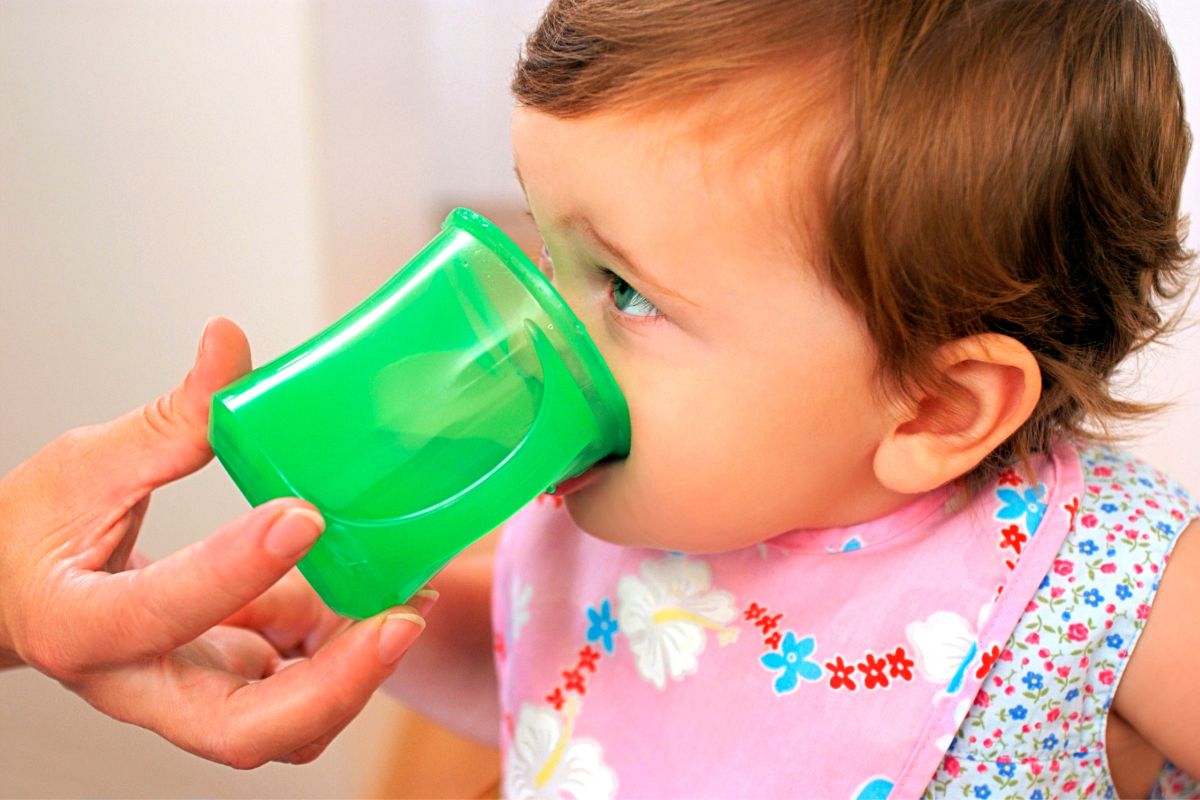
Serve cooled, boiled water with meals. An open cup is ideal (but messy!)
What’s the best way to approach mealtimes when my baby refuses to eat?
Do you worry if your baby refuses a meal?
If so, you’re not alone. I get these cries for help ALL the time from stressed-out parents wondering if this is normal, how it will affect their baby’s nutrition and what to do about it.
Every baby’s different. Some babies take to solids like ducks to water, and others are slow starters! A few even trick you by getting off to a flying start and then regressing when you think you’ve cracked it.
Here are six possible reasons why your baby may refuse food:
-
They’re under the weather: Prioritise hydration when your baby’s sick. Their appetite generally picks up when they feel better.
-
Teething: Offer pain relief if you need to. And offer soft foods like cold yoghurt, homemade ice pops or cold cucumber sticks as part of the meal.
-
They want to self-feed: I experienced this myself with my little girl. She point blank refused spoonfeeding. Follow your baby’s lead, offer finger foods alongside mashed foods, and let them explore. It might take a bit longer before they eat much, but that’s OK. Studies show they catch up by about ten months.
-
Tired: Offer food when your baby’s most alert. After a nap is usually a good time.
-
Not sitting comfortably: Ensure your baby’s legs (or feet if they’re long enough) are supported and not dangling.
-
Distracted: Turn off the TV and put away other devices during mealtimes. And eat with your baby if you can.
-
Full: Aim to space out milk and food throughout the day. But also accept that we all have days where we’re not as hungry as others.
Influencing what and how your child eats is a privilege. And so as you move forward over the next few months (when you’re on your hands and knees scraping Weetabix off the floor), remember weaning shouldn’t be stressful or complicated. Try to enjoy it; it’s a once-in-a-lifetime opportunity.
Get Your Free Cheat Sheet
When you’re bamboozled by weaning just take a moment! This cheatsheet will help you stay on track during weaning.
- Get the free cheat sheet. You’ll get the cheatsheet, plus join my weekly newsletter! Just click here to get it and subscribe.
- Print or download onto your phone.
- Hang your cheat sheet somewhere handy, like the fridge. Or save it in a folder on your phone.
Ready, Steady, Wean-From Confused To Confident In No Time At All
Save yourself time, stress and money and get all the answers you need in one easy-to-follow online course.




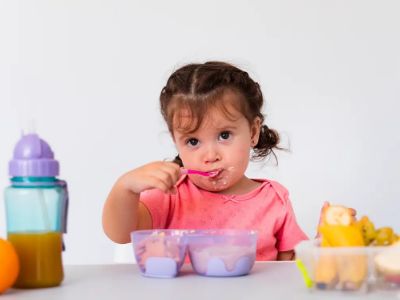
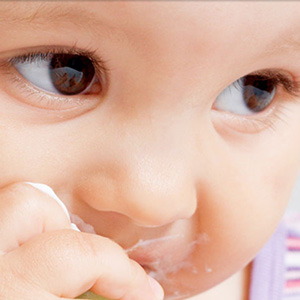


0 Comments